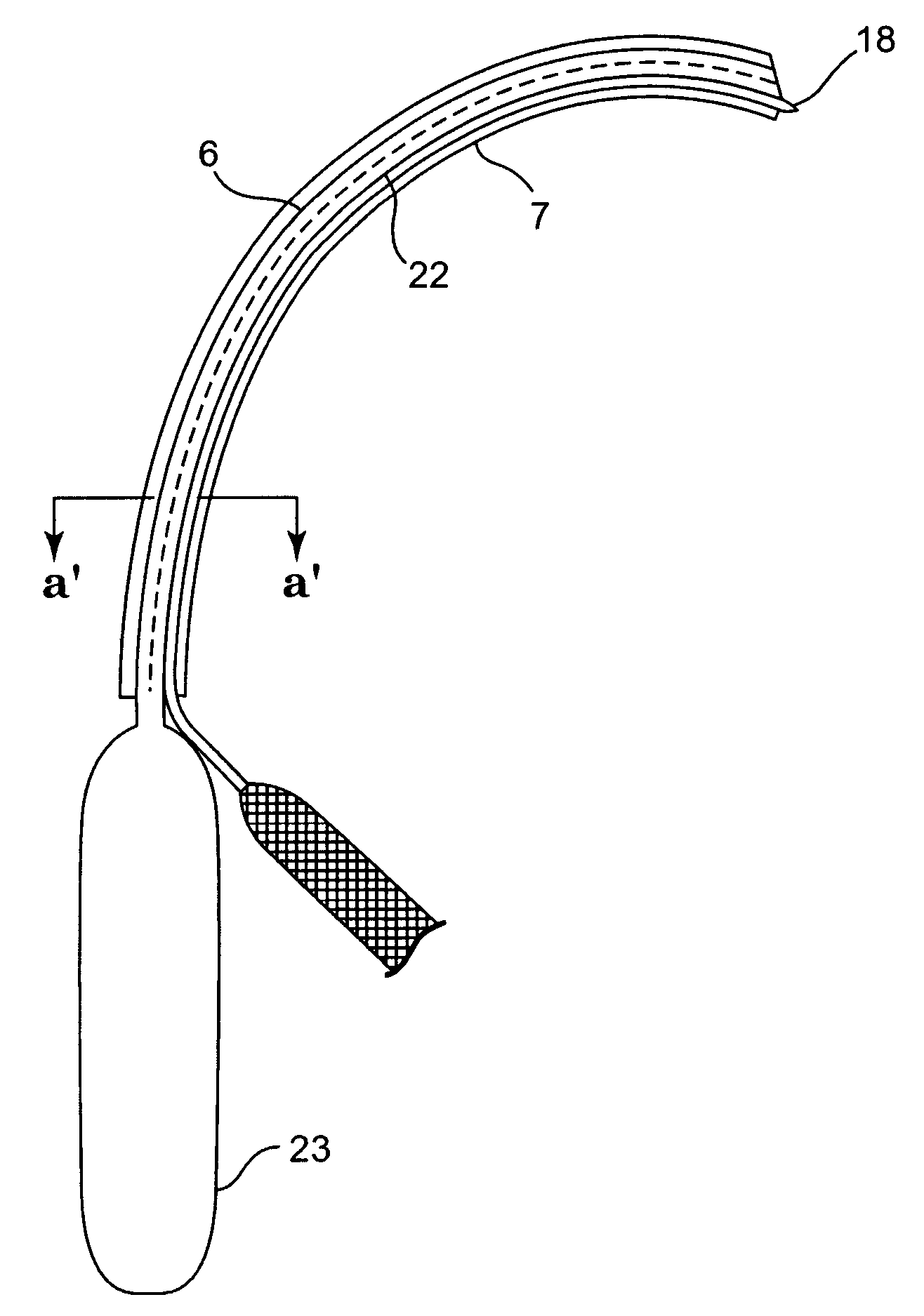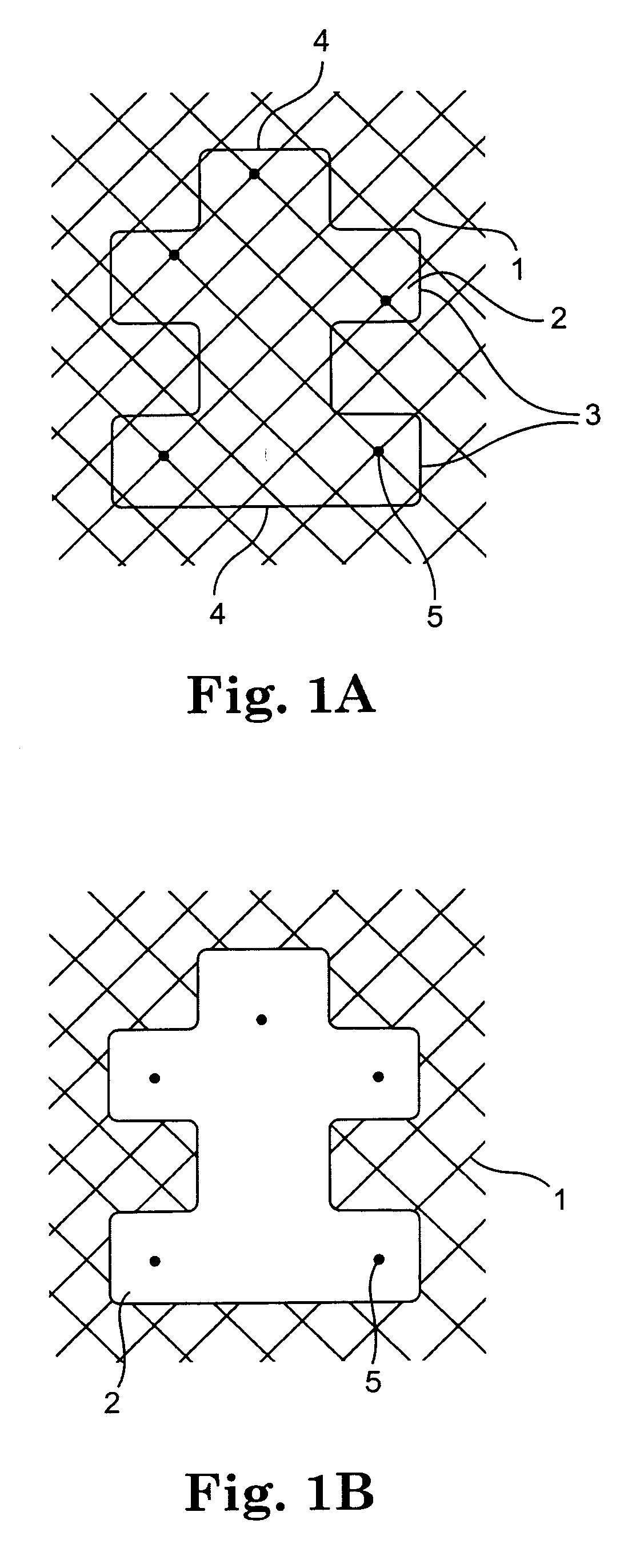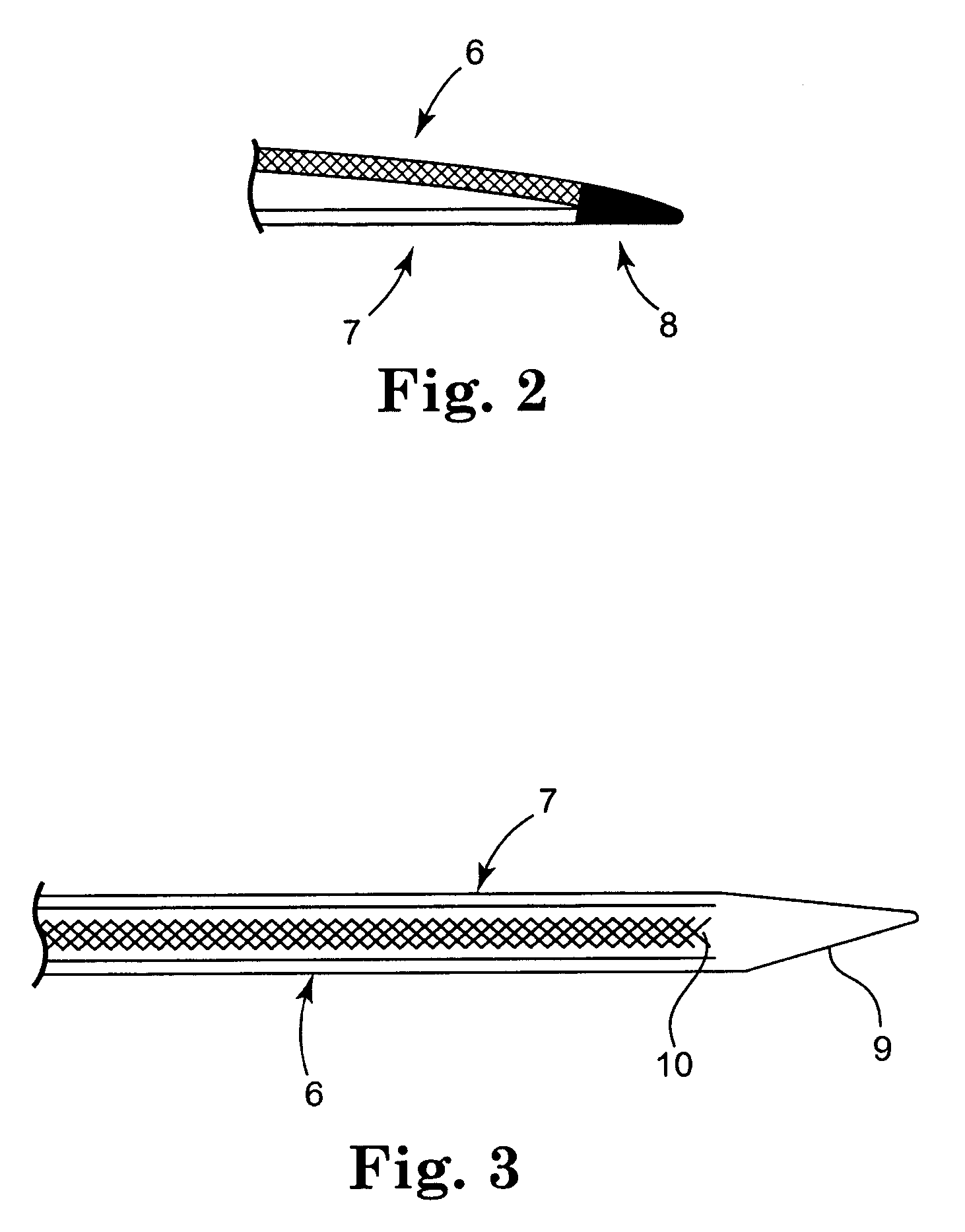Methods and apparatus for prolapse repair and hysterectomy
a technology for hysterectomy and prolapse, applied in the field of urogenital surgery, can solve the problems of increasing abdominal pressure, and the likely addition of additional importance of the problem, so as to achieve the effect of the end of the mesh arm, and increasing the size of the tab of the graft body
- Summary
- Abstract
- Description
- Claims
- Application Information
AI Technical Summary
Benefits of technology
Problems solved by technology
Method used
Image
Examples
Embodiment Construction
[0104] Referring now to the drawings, wherein like reference numerals designate identical or corresponding parts throughout the several views. The following description is meant to be illustrative only, and not limiting other embodiments of this invention will be apparent to those of ordinary skill in the art in view of this description.
[0105]FIGS. 1A and 1B depict an embodiment of the hybrid prolapse repair material. As shown in FIG. 1A, a hybrid prolapse repair material is comprised of polypropylene 1 and a biological graft 2. The polypropylene can be connected to the biological graft at arm attachment points 3 and at each end 4. Rivets 5 may be used to connect the polypropylene to the biological graft. Other means to connect the polypropylene to the biological graft could include RivFix, suturing, melting, y-joints, or any other connection means commonly known in the art.
[0106] The polypropylene 1 and the biological graft 2 can be connected at the arm attachment points 3 and at...
PUM
 Login to View More
Login to View More Abstract
Description
Claims
Application Information
 Login to View More
Login to View More - R&D
- Intellectual Property
- Life Sciences
- Materials
- Tech Scout
- Unparalleled Data Quality
- Higher Quality Content
- 60% Fewer Hallucinations
Browse by: Latest US Patents, China's latest patents, Technical Efficacy Thesaurus, Application Domain, Technology Topic, Popular Technical Reports.
© 2025 PatSnap. All rights reserved.Legal|Privacy policy|Modern Slavery Act Transparency Statement|Sitemap|About US| Contact US: help@patsnap.com



